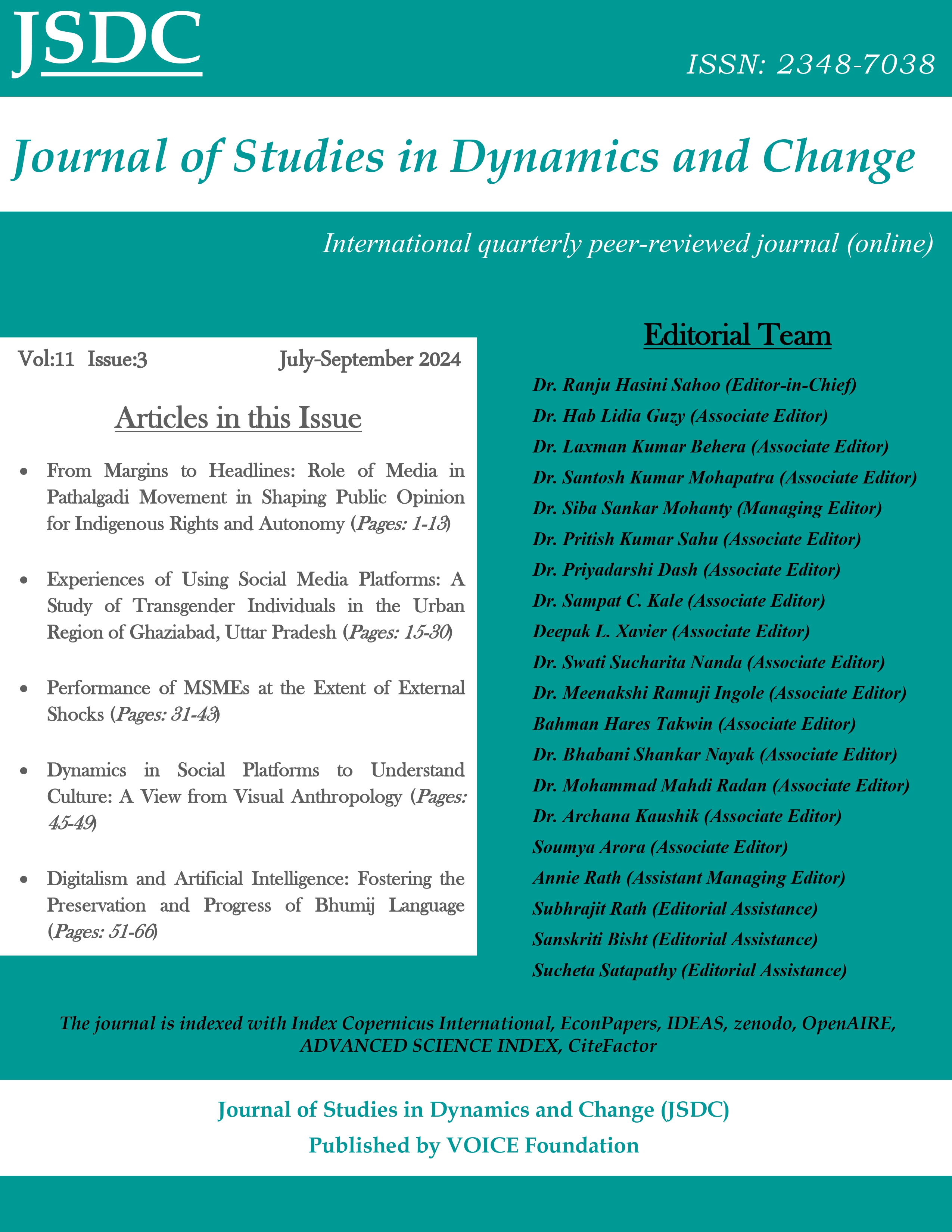Digitalism and Artificial Intelligence
Fostering the Preservation and Progress of Bhumij Language
Keywords:
Artificial Intelligence (AI), Bhumij tribal language, DigitalismAbstract
The present study explores the intersection of media, digitalism, and artificial intelligence (AI) in the context of the Bhumij tribal language (Ol-Onal). In today's digital era, the integration of AI technologies in media platforms has transformed the way information is accessed, shared, and consumed. However, the impact of these advancements on indigenous languages remains largely unexplored. This research aims to investigate the role of digitalism and AI in preserving, promoting, and revitalizing the Bhumij tribal language. By examining the current state of digital media platforms, the study analyzes the challenges and opportunities for integrating Bhumij language content. It explores the potential of AI-driven language technologies, such as machine translation and voice recognition, in enabling better access to Bhumij language resources it’s preservation. Additionally, the study investigates the ethical considerations surrounding AI and digitalism in the context of indigenous languages, addressing issues of representation, cultural sensitivity, and community engagement. Through this research, insights into the possibilities of leveraging digital media and AI for the benefit of the Bhumij tribal language can be gained. The findings contribute to the broader discourse on the intersection of media, digital technologies, and indigenous languages, with implications for language preservation and cultural diversity in the digital age.
References
Govt of Odisha. (2003). Department of Law. Bhubaneshwar. P-32.
Govt of Odisha. (2011). District Statistical Hand Book. Baripada: DPMU. Maurbhanj.
Nirgune, B. (1997). Lok Sanskriti. Bhopal: Hindi Granth Acadmey.
Nigam, R.C. (1971). Languge Handbook of Mother Languge in Census. Census Centenary Monograph, 10 Census of India, Registrar General of India, New Delhi.
Mukharji, R. N. (1916). SamajikManavsashtrakiRuprekha. Delhi: Vivek Prakashan.
Mukharji, R. N. (2014). Samajik Manav Shastra kiRoop Rekha. Delhi: Vivek Prakashan.
Risley, H.H. (1892). Tribes and Castes of Bengal. Calcutta: Bengal Secretariat press.
Risley, H.H. (1891). Tribes & Castes of Bengal.Calcutta:Vol-1.
Samad, L. (2007). Nelem Dastur. Tata Nagar: Anita Printers.
Samad, L., & Sardar, M. (2011). Aadim Bhumij Bhasha. Jamshedpur.
Varma, U. K. (2012). JanjatiyaSamaj. Bhopal: Jharokha Publication.
XaXa,V. (2014). Sanvedhanik Pravdhanavm Kanun or Janjatiyan. Delhi: Vanyajati Publication.
Downloads
Published
How to Cite
Issue
Section
License
Copyright (c) 2024 Journal of Studies in Dynamics and Change (JSDC)

This work is licensed under a Creative Commons Attribution-NonCommercial-ShareAlike 4.0 International License.
Readers and users of the Journal of Studies in Dynamics and Change (JSDC) are free to Share — copy and redistribute the papers published in the journal in any medium or format. However, the user (1) must give appropriate credit, provide a link to the license, and indicate if changes were made. (2) May not use the material for commercial purposes (3) Must distribute your contributions under the same license as the original if any remix, transform, or build upon the material is done.


